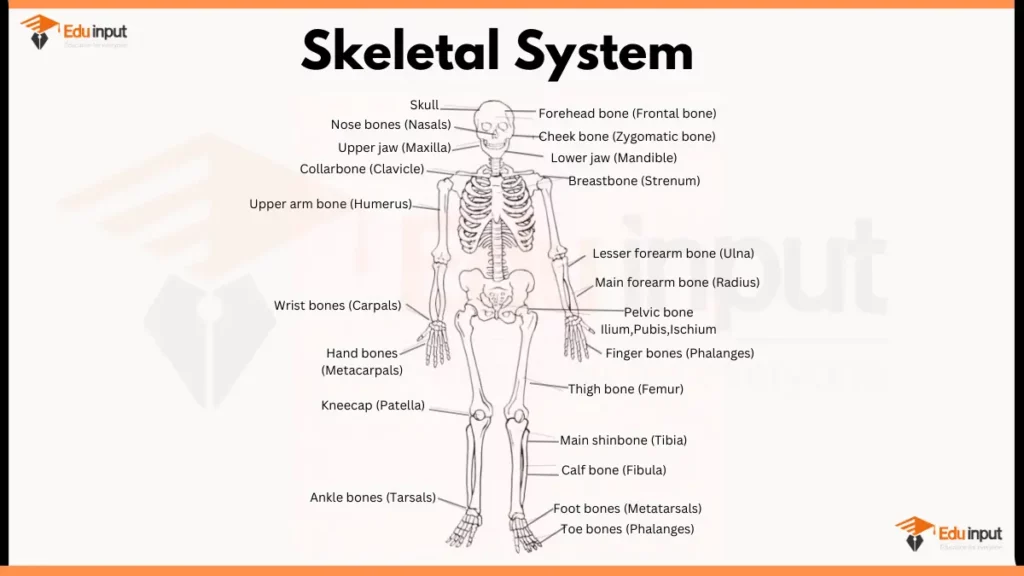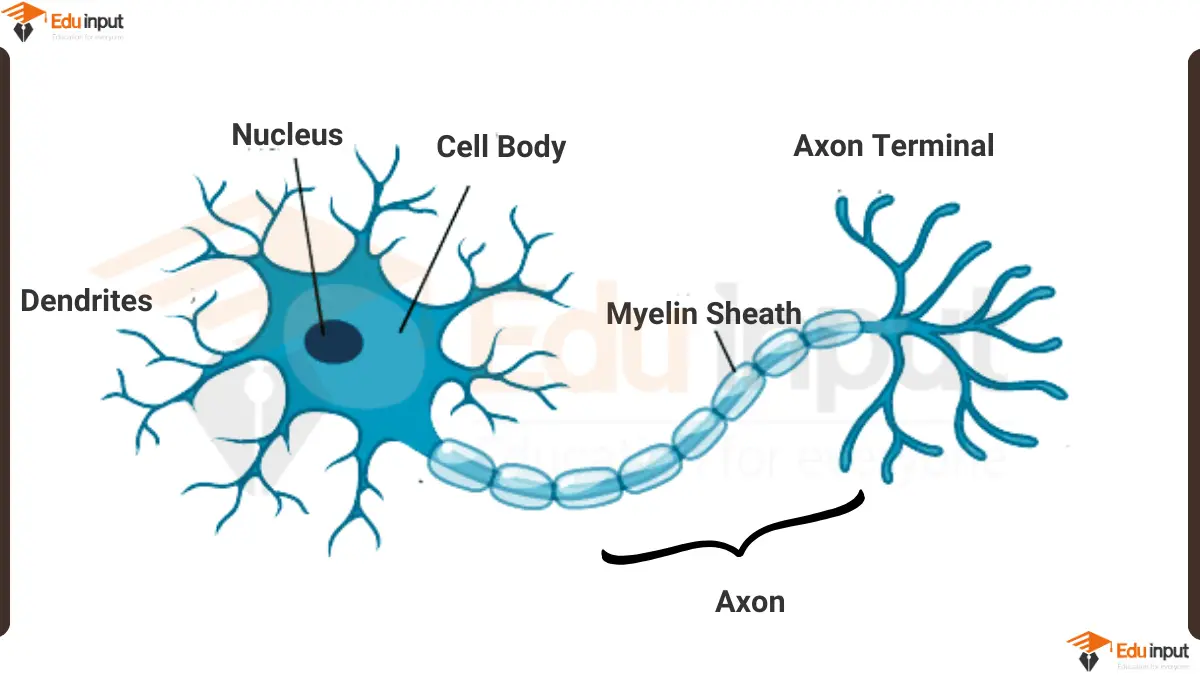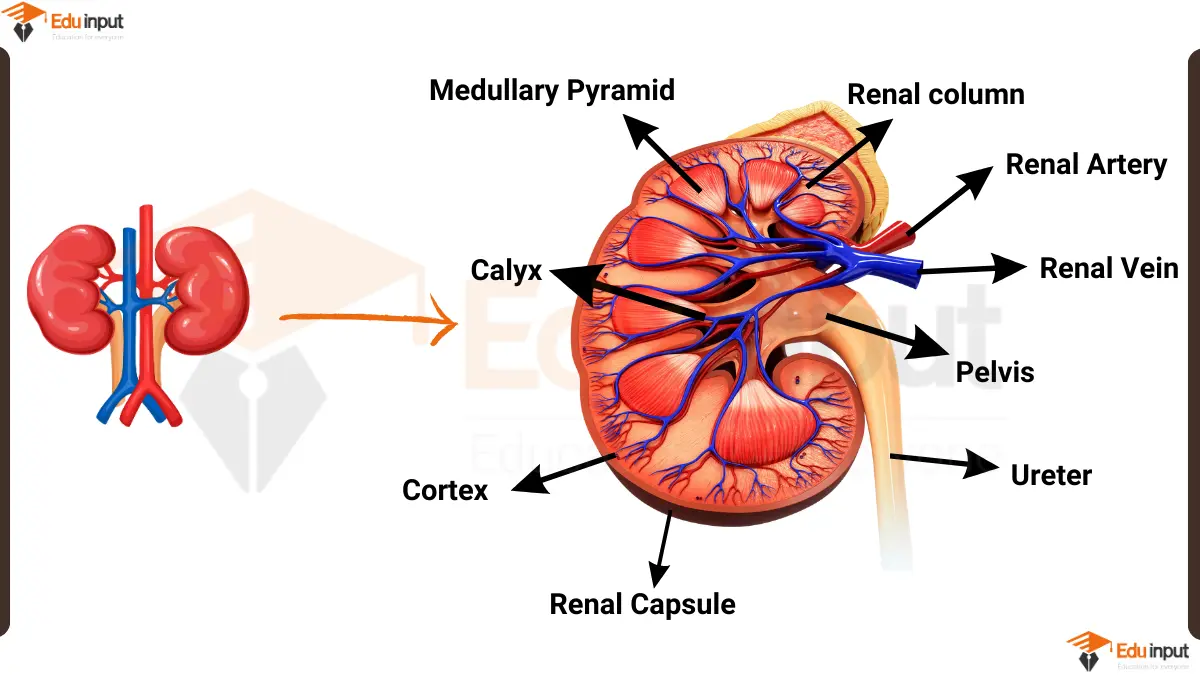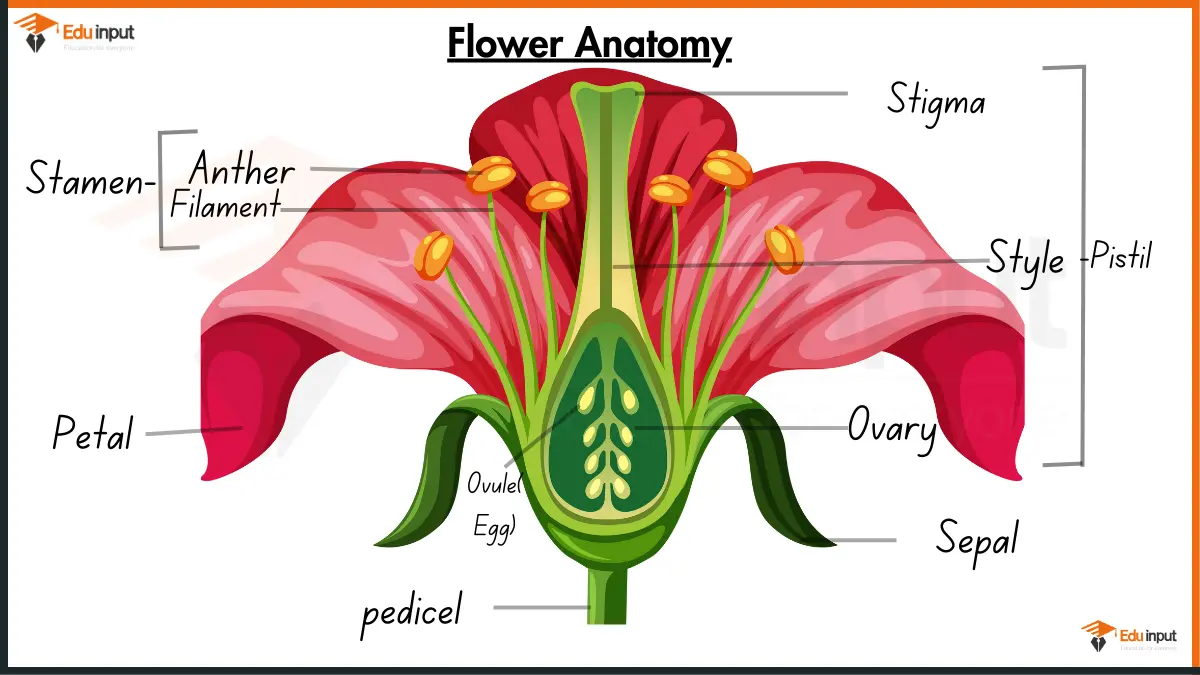Labeled Human Skeletal System Diagram
February 17, 2024
Human Skeletal System Diagram

Here are the main parts of Human Skeletal System:
Axial Skeleton
- Skull: Protects the brain and houses sensory organs like eyes, ears, and nose.
- Cranium: Composed of eight bones fused together, forming the braincase.
- Facial bones: Fourteen bones that make up the face, including the jaw, cheekbones, and eye sockets.
- Vertebral column (spine): Provides support and flexibility. It protects the spinal cord.
- 24 vertebrae divided into five regions: cervical (neck), thoracic (chest), lumbar (lower back), sacrum (pelvis), and coccyx (tailbone).
- Intervertebral discs cushion the vertebrae and absorb shock.
- Rib cage: Encloses and protects the vital organs in the chest cavity (heart, lungs).
- 24 ribs attached to the thoracic vertebrae, some directly to the sternum (breastbone).
Appendicular Skeleton
- Pectoral girdle (shoulder): Connects the arms to the axial skeleton.
- Clavicle (collarbone) and scapula (shoulder blade) form the shoulder joint.
- Upper limbs
- Humerus (upper arm bone).
- Ulna and radius (forearm bones).
- Hand bones: carpals (wrist), metacarpals (palm), and phalanges (fingers).
- Pelvic girdle (hip): Connects the legs to the axial skeleton.
- Two innominate bones (each fused from ilium, ischium, and pubis) form the pelvis.
- Lower limbs
- Femur (thigh bone).
- Patella (kneecap).
- Tibia and fibula (lower leg bones).
- Foot bones: tarsals (ankle), metatarsals (sole), and phalanges (toes)
File Under:

 written by
written by 





Leave a Reply